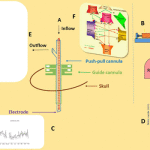Tag Archives:nitric oxide
Effects of nitric oxide donation and nuclear factor-kappa B inhibition on schistosomiasis mansoni
Mechanical injury in plants triggers local and long distance response using biochemical signals
Melatonin protects the powerhouses of cells, the mitochondria
Mitochondria have been named the ‘powerhouses of cells’, because they are the main source of ATP, a carrier molecule of chemical energy for versatile use in numerous metabolic reactions. ATP is generated by the electron transport chain
Dinitrosyl iron complexes – natural medicinal form of NO
One explanation for why females have more optimal cardiac blood flow compared to males
Pathological role of oxidative stress and related with schizophrenia in T. gondii infection
Tapping neurotransmitters from neurons to investigate their involvement in brain function
Nitric oxide trigger apoptosis in the brains in Border Disease
Border disease is a pestivirus infection accompanied by central nervous system (CNS) and skeletal abnormalities in sheep and goats. Affected fetuses and newborn animals exhibit brain disorders. This study investigated the relationship between the severity of the












